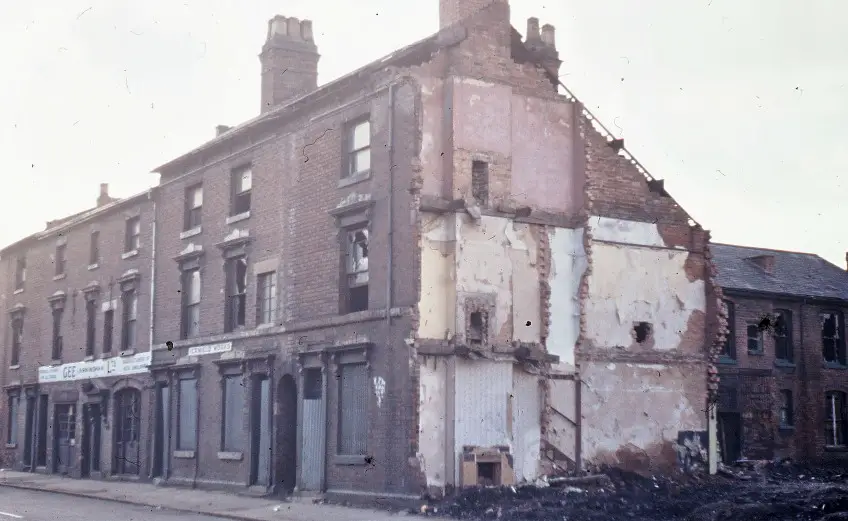Zippy
As you say, your terrace has long gone. But attached are two photographs taken around 1970-72 of Icknield st either side of no 257, after 257 had been demolished.They were not taken at the same time however. In the first (Icknield st approaching lodge rd) I estimate the building farthest to the left is no 259. This is by examining this and an adjoining photo of the junction and counting house numbers. The second shows Gee(Birmingham ) Ltd and buildings either side. Gees are listed as being 249-252, which I estimate are the two centre blocks (with signs "Gee" and "Icknield works"). This makes the building farthest right to be no 253.
Hope that is useful
mike


As you say, your terrace has long gone. But attached are two photographs taken around 1970-72 of Icknield st either side of no 257, after 257 had been demolished.They were not taken at the same time however. In the first (Icknield st approaching lodge rd) I estimate the building farthest to the left is no 259. This is by examining this and an adjoining photo of the junction and counting house numbers. The second shows Gee(Birmingham ) Ltd and buildings either side. Gees are listed as being 249-252, which I estimate are the two centre blocks (with signs "Gee" and "Icknield works"). This makes the building farthest right to be no 253.
Hope that is useful
mike

